The lore of the Old Republic is incredibly rich, and many pieces of this lore are captured through codex entries that can be discovered as you play the story, meet new groups and organizations, and find hidden lore objects. Below is a compilation of many of the lore codex entries from the game about Mandalorians as well as some of the timeline text and history from Star Wars: The Old Republic.

Mandalorians
Location: (Organization)
An interspecies warrior culture stretching back thousands of years, the Mandalorians live for one purpose: to challenge the greatest opponents in combat and claim victory, for honor and glory. The best are proud fighters driven by a noble code, while the worst are bloodthirsty killers always looking for the next battle.
While many act as independent mercenaries, the Mandalorians are divided into clans each answering to their own leader. From time to time in history, a single leader of all clans appears and is called “Mandalore.” Each new leader of the Mandalorians takes the name and mask of Mandalore and determines whether the clans will scatter or unite against a great foe. Initiates can be born into Mandalorian society or inducted from outside; either way, new Mandalorians face harsh trials as they prove themselves worthy and learn the secrets of Mandalorian weapons and armor.
The Mandalorians have been loosely allied with the Sith Empire since the Empire’s return to the galaxy and played an instrumental role in the Sacking of Coruscant. Though not Imperial subjects, the Mandalorians have an enclave in the Citadel on Dromund Kaas. Their relationship with the Empire is sometimes strained, but the alliance offers one undeniable advantage: ample opportunity to face the galaxy’s greatest warriors, the Jedi.
The Mandalorian Wars
Revan and Malak did not fall to the dark side in a single moment. They turned after years spent in war and in defiance of the Jedi council.
Revan and Malak’s descent into darkness actually began with compassion—the compassion that compelled them to enter the Mandalorian wars.
Of all wars in Republic history, the war with the Mandalorians was the bloodiest, due in large part to the Mandalorians’ ambitious leader.
Mandalore the ultimate sought to create the most powerful army in the galaxy.
To achieve this, he had to defeat the Republic and its Jedi protectors
Calling together the Mandalorian clans and recruiting new warriors as “neo-crusaders”, Mandalore began conquering unaligned worlds in the outer rim.
The Mandalorians fought Republic allies on many fronts, but the Republic military wasn’t fully mobilized until Taris was threatened.
In the first series of battles, the Republic proved victorious.
Several heroes emerged, including the dedicated soldier and talented pilot, lieutenant Carth Onasi.
But, Onasi and the rest of the Republic’s defenders hadn’t faced the true challenge.
Mandalore the ultimate was secretly holding the bulk of his forces back to test the Republic’s strength.
Unleashing their full might, the Mandalorians devastated the Republic’s defenses, and began terrorizing systems from the Tingel arm to the mid rim.
The Jedi council refused to be baited into the battle. Despite the Mandalorians brutal aggression, the council decreed that no Jedi should take part in the fight.
As the war grew worse however, a splinter group of rebels formed within the order, determined to rally to the Republic’s defense.
The splinter group was led by Revan and Malak.
Joining Onasi and the rest of the Republic’s troops, Revan and Malak turned the war around.
Revan led the Republic’s forces in a powerful push to drive the Mandalorians from Republic space. In the final battle, Revan single-handedly slew Mandalore. He then activated a super-weapon which destroyed an entire planet… and everyone on it. Revan’s act destroyed the Mandalorian armies and ended the war, but sacrificed the lives of thousands of Republic troops and Jedi in the process…
With the war over, dutiful Republic soldiers like Carth Onasi returned to their posts, but Revan and Malak pursued the remnant of the Mandalorian armies into deep space.
It was there of course, that Revan and Malak found the Sith Empire, and upon meeting the emperor, their fall to the dark side was complete. Though it became a boon to the emperor’s plan, none suspected that the hand of the dark side played a role in the Mandalorian wars.
A closer analysis of history suggests otherwise.
The Return of the Mandalorians
Mandalorians.
Trained from birth to fight in battle, their bodies are honed into killing machines.
These independent warrior-nomads have challenged the jedi for centuries.
The Mandalorians embrace conflict and admire strength. But they are different from our dark counterparts. They are not like the sith.
Mandalorians believe confrontation is required for growth — on the personal, as well as the cultural level.
War is the Mandalorians’ way of life. Combined with their thirst for conquest, it makes them undeniably dangerous.
However, we must acknowledge that their commitment to self-improvement is not unlike our own…
And there is even something respectable about their rugged sense of honor.
But they are not our friends.
The Mandalorians’ allegiance to our enemies has cost us dearly.
After the sith empire’s initial onslaught, star systems continued to fall, until the jedi finally managed to stop the enemies’ advance in the mid rim.
For the first time in decades, the republic senate breathed a sigh of relief.
But it was short-lived.
In the arenas of geonosis – a young gladiator had risen to prominence, calling himself the new ‘Mandalore’ – a title unclaimed for centuries – a title reserved for the greatest warrior in the galaxy—a warrior worthy to lead the Mandalorians.
Though it had been centuries, the descendants of the once-proud culture had not forgotten the legends of the Mandalores who had gone before.
Spread far and wide, working as mercenaries and bounty hunters, when the new Mandalore called, his loyal subjects came.
Mandalore’s call was simple — to confront the galaxy’s greatest challenge and fight the legendary knights of the jedi order.
Amassing an army overnight, Mandalore planted his forces in the path of the hydian way trade route — cutting off the republic’s most critical supply lines.
We were initially hesitant to pull back from the battle with the sith in the outer rim—but after several pleas from the senate, the supply crisis could not be ignored.
The jedi order answered the new Mandalore’s challenge — we attacked the blockade.
Our order was defeated quite profoundly…
The Mandalorian blockade held strong until the day intrepid smugglers took their shot at the Mandalorians, and managed to rescue the republic.
Mandalore went on to lead many of his followers to seek new challenges while others again struck out on their own.
The true enigma in the resurgence of the Mandalorians was the rise of the new Mandalore himself.
I will endeavor to find clues to this enigma for my next report.
The Mandalorian Blockade is Broken
After the sacking of coruscant, the Jedi council agreed that the Republic had been undone by the bold cunning of the Empire’s strategy.
A closer look, however, suggests the sacking of coruscant was not the crowning moment of the Empire’s campaign, but rather a risky maneuver undertaken after all other efforts had failed. The sith only considered turning to such measures after their efforts were undermined by an unlikely Republic ally — the criminal smuggling contingent that broke the Mandalorian blockade.
The blockade choked the primary trade route for providing Republic military support to the outer rim… and the main hyperlane for bringing raw goods from the colonies to the core worlds.
Long-standing holdouts in the outer rim began folding to the Empire, and critical supplies vanished from the core worlds almost overnight. As starvation swept through the lower levels of coruscant, riots broke out planetwide. Talk in the senate veered sharply toward a complete surrender to the sith Empire. It was at this critical hour that a mirialan smuggler named Hylo Visz recognized an extraordinary business opportunity for her and her partners.
With the Republic willing to pay any price for raw goods, Hylo’s plan was simple — break the Mandalorian blockade.
Loading massive freighters with all the goods the outer rim had to offer, Hylo and her fellow smugglers hauled their loads to within a parsec of the blockade and stopped still.
Distracted by suspicious freighters, the Mandalorians never knew what hit them — a motley fleet of small starships dropped out of hyperspace and opened fire.
A massive space battle ensued. The smugglers’ light fighters ran rings around the Mandalorian cruisers — but even so, Hylo Visz and her band were outmatched.
Fortunately, Republic strategic information systems was tipped off and starfighters were scrambled from nearby systems. With their assistance, the Mandalorians were quickly overcome.
The blockade broken, Hylo visz brought freighters full of raw goods into coruscant and walked away with more wealth than she had ever imagined. An elaborate medal ceremony was held in her honor, but Hylo never showed — she was long gone.
Rumor has it Hylo visz was killed a year later for double-crossing the Hutts. Regardless, through this unlikely hero’s efforts, the Republic war effort gained a reprieve.
At the time, many believed the Empire was behind the Mandalorian blockade. My research indicates a far more elaborate explanation. I will share that in my next report.
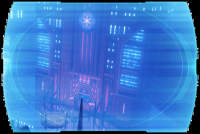
The Citadel
Location: Dromund Kaas
The Citadel stands at the heart of Kaas City, a monument to the Sith Empire’s strength and home to its most powerful Dark Lords. The Ministries of War, Intelligence and Logistics are all headquartered here, along with a Mandalorian enclave. The Emperor’s Dark Council gathers to meet in the Citadel when not on the Sith holy world of Korriban.
The original Citadel mimicked the designs of Korriban’s Sith Academy and the Great Citadel on Ziost, but it was destroyed four hundred years ago when two members of the Dark Council fought an ancient Sith duel, called the Kaggath, on its grounds. The duel was a draw, and both of the combatants were executed by the remaining Dark Council members, who oversaw the rebuilding of the Citadel in its current form.

The Mandalorian Enclave
Location: Dromund Kaas
The most recent architectural addition to the Citadel, the Mandalorian enclave is reserved for the Empire’s allies among the mercenary Mandalorian warrior clans. Although it may appear to be a simple embassy from the outside, the proceedings inside are anything but diplomatic. The enclave is a place where new warriors come to test themselves against the Mandalorians and compete in violent (and often deadly) tournaments, as well as where the best among the Mandalorians help plan the Empire’s next strikes.
Mandalorian-Specific History

Galactic History 21: The Birth of the Mandalorians
The culture of the gray-skinned Taung species had always been defined by conflict, even before their days battling the Battalions of Zhell on Coruscant. For millennia, striking out from the world they called Mandalore, the Taung explored and conquered new worlds, seeking new opponents to test themselves against.
Over time their philosophy of battle grew and changed, and a new cadre of elite warriors emerged. Known as the Mandalorian Crusaders, these warriors were honed by years of battle and guided by a strict code of honor. Wild stories began to spread throughout the Outer Rim of soldiers who could disappear into forests, face terrifying beasts without a trace of fear or even capture an entire planet in a day.
These tales were the first time the name “Mandalorian” became widely known. Although the Taung themselves went into decline and eventually disappeared, they left behind followers trained as they were. Ever after, the Mandalorians were a people to be respected, and feared.

Galactic History 15: Mandalore
The gray-skinned Taung species, which clashed with humans long before the formation of the Republic, had lost none of its fearsome reputation over the years. The Taung revered conflict in all forms, relishing the chance to test themselves against powerful enemies.
While the young Republic continued to expand, the Taung also sought out and colonized many worlds. Eventually they discovered an Outer Rim planet populated by enormous, vicious beasts called mythosaurs. The Taung took the world for their own, calling it Mandalore after their leader, Mandalore the First. The mythosaurs presented little challenge to the powerful Taung; in time, mythosaur bones were used to build Mandalore’s first cities.

Galactic History 42: The Nevoota Extinction
Some years before the Old Sith Wars, the Nevoota–a species of insectoid aliens from the Balmorra system–found themselves facing an army of disciplined warriors in distinctive armor. The warriors were Mandalorian Crusaders, testing themselves against the galaxy’s deadliest species.
However, the Nevoota were a challenge even for the Mandalorians. Possessing superior numbers and utterly disdainful of death, the Nevoota fought a four-year campaign under the cunning warlord Ithcharaka–but finally the Mandalorians hunted the Nevoota to extinction.
This conflict had a profound effect on Mandalorian culture. The Mandalorians began to see war itself as an end, not just a means of conquest. Through war, Mandalorian society found its highest expression. When Mandalore the Indomitable eventually rose to power, he led a people who demanded nothing less than the greatest challenges the galaxy could offer.

Galactic History 50: Basilisk
Since their grueling campaign against the Nevoota, the Mandalorians had only grown in power, cutting a swathe through the galaxy in search of worthy opponents. When the Mandalorians besieged the planet Basilisk, the Basiliskans–reptilian droid-builders and legendary technologists–learned that the stories of Mandalorian battle prowess were true.
Realizing they couldn’t win even with Republic aid, the Basiliskans chemically poisoned their own world, hoping to take their conquerors with them. But the Mandalorians were victorious nonetheless, enslaving the Basiliskans and eventually turning them into mindless beasts of war.
More importantly, the Mandalorians captured many of the unique droids that the Basiliskans created. After this conquest, they were able to mass-produce the droids for themselves. Centuries later, the Mandalorians’ Basilisk war droids would become a legendary terror during the Mandalorian Wars.

Galactic History 57: The Brotherhood’s Power Grows
United as the Brotherhood of the Sith, Exar Kun and Ulic Qel-Droma set about gathering their strength. Exar Kun sought converts to his new Sith Order among the Jedi on Ossus, killing Master Odan-Urr to claim a powerful Sith holocron.
Focused on strategy, Ulic contacted the Mandalorians, whose leader, Mandalore, had challenged the Krath cult’s rule of the Empress Teta system. Ulic defeated Mandalore in a duel, and the Mandalorians rallied under his banner.
Exar Kun also gave Ulic a terrible weapon–the Dark Reaper, which was capable of drawing out the life essence of an entire army. Ulic tested the Dark Reaper against Republic troops on Raxus Prime, killing hundreds. With the Dark Reaper, Mandalorian Crusaders, the Massassi warriors and Exar Kun’s own horrific alchemical creations, the Brotherhood of the Sith was finally ready to challenge the Republic.

Galactic History 58: Ulic’s Trials
The Brotherhood of the Sith was ready to strike. The fallen Jedi Ulic Qel-Droma, the Sith sorceress Aleema and Mandalore gathered their armies to attack Coruscant. But they underestimated Coruscant’s Jedi defenders. The Brotherhood’s forces were repelled, and Ulic was captured.
Ulic was taken to the Senate tower to stand trial. But the Jedi Master Vodo Siosk-Baas sensed that Ulic hadn’t acted alone, that Siosk-Baas’s old student, Exar Kun, was involved. During the trial, Exar Kun himself marched into the Senate tower with his Massassi warriors. He subdued the assembly with his Force abilities and humiliated the Supreme Chancellor.
Vodo Siosk-Baas then entered, challenging his former pupil. Exar Kun’s unusual double-bladed lightsaber and dark powers prevailed, however, and Siosk-Baas was killed. Exar Kun and Ulic then left Coruscant and returned to Yavin Four to prepare for the next battle.

Galactic History 59: Aleema’s Fate
Treachery is the way of the Sith. Ulic Qel-Droma’s capture on Coruscant had been engineered partly by his ally, the Sith sorceress Aleema Keto: she had ordered Mandalore to withdraw their forces at a critical moment. However, after Mandalore helped to rescue Ulic from Coruscant, he secretly told Ulic everything. Aleema’s fate was sealed.
Feigning ignorance, Ulic continued with the Sith Brotherhood’s plans. Using Naga Sadow’s ancient battleship, the Corsair, they planned to lure the Republic fleet into the Cron Cluster and use the Corsair to destroy its suns, annihilating the fleet.
Aleema took the Corsair into the Cron Cluster and activated the superweapon, but Ulic had deliberately not warned her of the consequences. The blast annihilated the entire Cron Cluster in a supernova, sending a shockwave toward the Jedi world of Ossus. The Corsair itself was consumed, taking Aleema with it.

Galactic History 67: Mandalore the Ultimate
The Mandalorians had suffered not only defeat but humiliation in the Great Sith War. After their leader, Mandalore the Indomitable, crash-landed on Dxun and was devoured by wild beasts at the war’s end, a new warrior rose to take his place, later called “Mandalore the Ultimate.”
Deciding to bring in new blood, Mandalore opened the ranks of the Mandalorian Crusaders–once dominated by the followers of the ancient Taung, now fielding alien recruits. Calling themselves Neo-Crusaders, these warriors adopted traditional Mandalorian armor and training. Mandalore established a base on Dxun, testing his warriors against Dxun’s infamous predators.
As their ranks grew, the Neo-Crusaders began to conquer worlds weakened in the Great Sith War. Later Jedi would believe Sith influences propelled the Mandalorians into war, but the Mandalorians themselves claimed to be driven only by the chance for conquest and revenge.

Galactic History 68: The Mandalorians Return
The Mandalorians had never forgotten their humiliating defeat at the Republic’s hands during the Great Sith War. With his Neo-Crusader warriors prepared by a decade of conquest, Mandalore the Ultimate decided the time was right and launched an assault on the Republic. Several Zabrak colonies fell to the Mandalorian advance, under heavy blaster fire and the shadow of Basilisk war droids.
Finally provoked into action, the Republic appealed to the Jedi for military support, but the Council refused. The Masters believed there were greater forces at work behind the Mandalorian invasion than a simple lust for war. They wanted to remain apart from the conflict, believing the true threat would reveal itself in time. However, some younger Jedi disagreed with the Council’s edict. These Jedi would form a splinter group, the “Revanchists,” and answer the Republic’s call for help.

Galactic History 69: The Mandalorian Wars
The Mandalorians had returned to take revenge on the Republic and sate their lust for war and conquest. With the Jedi Council refusing to lend military aid–believing the true threat was still unclear, and the risk of conflict-hardened Jedi falling to the darkness was high–the Republic was unable to prevent the Mandalorians from devastating the planet Cathar. Millions died. This was the last straw for several young Jedi, who disobeyed the Council to join the war effort.
The most notable was Revan, a charismatic and skilled leader who rose to the rank of general. Revan’s friend Alek, later known as Malak, distinguished himself on the front lines. Revan’s tactics and Malak’s unyielding strength turned the tide, helping the Republic forces to victory at Althir and Jaga’s Cluster.
But the Council did not approve. Seeing their rash involvement in the war and their gradual adoption of Mandalorian tactics, the Council watched Revan and Malak’s heroics uneasily, remembering the fall of Exar Kun.
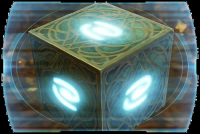
Galactic History 70: The Covenant Acts
For years, the Jedi Covenant had existed secretly within the Jedi Order, dedicated to finding and destroying the next Sith threat before it began. Then, during a mission with their Padawans, the Covenant seers had a terrifying vision: a Sith Lord in red destroying the galaxy. The Covenant realized their Padawans were wearing red environmental suits, exactly like the Sith Lord in their vision.
The Jedi Covenant made a solemn decision. To ensure the galaxy’s safety, their Padawans had to be killed before the prophecy was fulfilled. The terrible deed was done on Taris during the Padawans’ knighting ceremony.
Only the Padawan Zayne Carrick, who was late to the ceremony, survived. Framed for the murder of his fellow Padawans, Carrick went on the run, pursued by the Covenant who feared he would become the next Sith Lord.

Galactic History 71: The Muur Talisman
As the Mandalorian Wars raged, Zayne Carrick escaped the Jedi Covenant, falsely accused of murdering his fellow Padawans. While hiding on Taris, Carrick encountered Celeste Morne, one of the Covenant’s shadow operatives. Morne was searching for the Muur Talisman, a Sith artifact that could turn humans into monstrous rakghouls.
Morne attempted to arrest Carrick but was interrupted by a Mandalorian raid. Realizing the Mandalorians had found the Muur Talisman, Morne and Carrick stowed away on the Mandalorians’ ship to Jebble. The dark talisman possessed Morne, and she began using it to turn the Mandalorians into rakghouls.
Horrified, Carrick finally persuaded Morne to see reason. She agreed to be sealed away in an oubliette to protect the galaxy from the talisman’s corruptive power. The oubliette was lost when the Mandalorians razed Jebble; however, Carrick spoke of the Muur Talisman–and rakghouls–to another Jedi, Alek… later known as Darth Malak.
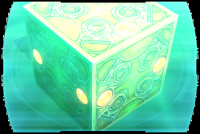
Galactic History 72: The Fall of the Covenant
The Jedi Covenant’s attempts to prevent another Sith war had led its members to horrific acts, culminating in the murder of their Padawans. It was too much for the seer Xamar, who left the Covenant to aid Zayne Carrick, the Padawan framed for the crime.
Together they went to confront Krynda Draay, the founder of the Jedi Covenant, and her son Lucien, Carrick’s former Master. At the Draay mansion, Carrick discovered the real culprit: Krynda’s aide Haazen, a fallen Jedi who had been manipulating the Covenant. As Lucien and Carrick dueled, Haazen used an override in the Republic Navy’s weapon systems, intending to destroy the Jedi Temple and the Council.
At the last minute, Lucien overcame his anger, helped Carrick escape, then used Haazen’s override to bombard Haazen’s position instead. Haazen was killed; Lucien survived, suffering serious injuries. Zayne Carrick’s name was cleared, and the Jedi Covenant was finished.

Galactic History 73: The Battle of Malachor Five
Ignoring the Jedi Council’s disapproval, the Jedi generals Revan and Malak had gone to war against the Mandalorians, gradually pushing the warriors back. After lengthy maneuvering, Revan chose the planet Malachor Five as his final battleground.
As Republic and Mandalorian ships clashed, Revan challenged Mandalore himself to single combat and defeated him, claiming the mask that was Mandalore’s symbol of leadership. Meanwhile, one of Revan’s generals enacted Revan’s fearful plan, activating a superweapon called the Mass Shadow Generator.
The Mass Shadow Generator destroyed not only the Mandalorian fleet, but most of the Republic ships and much of the planet Malachor Five. The Republic suffered horrific losses, but Revan, hardened by years of war, saw it as a necessary price for victory. Leaderless, the remnants of the Mandalorian fleet fled into the Unknown Regions, with Revan and Malak in pursuit.

Galactic History 74: Revan and Malak Fall
Finally, the Mandalorians had been routed. The Jedi generals Revan and Malak had killed Mandalore and hounded the remnants of the enemy fleet far beyond the boundaries of Republic space–and in so doing, performed terrible deeds and learned dark powers.
But there were darker days to come. During Revan’s pursuit of the Mandalorians, he and Malak discovered the ancient Sith Empire hidden on Dromund Kaas. Realizing this Empire was the true threat to the Republic, Revan and Malak faced the Sith Emperor himself, intending to cut off the serpent’s head–but the Emperor was too powerful. Overwhelmed by the Emperor’s dark presence, they pledged themselves to his service.
The Sith Emperor anointed Revan and Malak as true Sith Lords and sent them to seek out the Star Forge, an ancient alien space station capable of producing powerful starships and droids. Never revealing the existence of the Emperor, Revan and Malak then returned to the armies that had followed them against the Mandalorians, armed their loyal servants with the Star Forge’s weapons, and marched to war against the Republic.

Galactic History 75: The Jedi Civil War
Revan and Malak, once great Jedi, had turned to the dark side and sought to conquer the Republic. With an infinite fleet produced by the Star Forge space station, they seemed as unstoppable as the Mandalorians. They took control of entire systems and established a new Sith academy on Korriban.
This time, the Jedi Council did not hesitate to act. The Republic lured the Sith Lords into battle against a small fleet. This allowed a Jedi strike team led by Bastila Shan to board Darth Revan’s flagship.
Darth Malak had plans of his own. Having grudgingly taken his role as Revan’s apprentice, he decided to usurp his master. With the Jedi providing a perfect distraction, Malak fired on Revan’s flagship, destroying the bridge. Malak claimed the title of Dark Lord, not realizing the Jedi strike team had survived and taken Revan–injured, but alive–as their prisoner.

Galactic History 88: The Unlikely Champion
Established in ancient times, the Great Hunt is a Mandalorian contest of skill and glory overseen by the venerable Wookiee Huntmaster. Though the clans had been scattered, there was an attempt to keep the Great Hunt and its traditions alive. However, during one Great Hunt, the Mandalorians were surprised to see a droid among the competitors–an utterly unprecedented event.
After questioning the droid–an obsolete construction model–the Huntmaster overrode objections from conservative hunters and allowed its entry. The nameless droid proceeded to outwit and out-gun its way to victory in the Great Hunt.
When the droid returned to claim its title as champion, more arguments ensued. Ression Trana, a prominent clan leader, claimed loudly that a droid champion mocked Mandalorian traditions. The droid listened patiently until Trana accused it of being a proxy for a cowardly hunter. Without hesitation, the droid kicked Ression Trana, mid-sentence, through a window. In the aftermath, the droid earned not only the title of Grand Champion, but also its nickname: “the Defenestrator”.

Galactic History 92: The Hydian Way
Driven to test themselves in war, the Mandalorians had traditionally found common ground with the goals of the Sith. After the Empire’s return, a new Mandalore emerged, forged in the gladiatorial arenas of Geonosis, and agreed to an Imperial alliance. Calling his scattered people together, Mandalore assembled a powerful fleet and blockaded the Hydian Way, a critical Republic supply line.
The Core Worlds slowly began to starve, and a partnership of underworld figures led by the smuggler Hylo Visz saw opportunity. The group baited the Mandalorians with bulk freighters of goods, before a motley fleet of starships ambushed the Mandalorian cruisers and forced them to break formation. With support from the Republic Navy, the blockade was destroyed.
As Hylo and her associates grew rich overnight, the Mandalorians withdrew. Dissent was growing in the ranks. Soon, Mandalore himself would face a challenge to his leadership.

Galactic History 93: The Mandalorian Schism
The Great Hunt–a test of skill, valor and daring–has been a Mandalorian tradition for generations. After the Mandalorian defeat at the Hydian Way, Mandalore organized a Great Hunt to inspire and unite his people. The winner, Artus, challenged Mandalore to a duel and shot him dead. Artus then claimed the title of Mandalore himself, reaffirming the alliance with the Sith Empire.
Several Mandalorian clans, led by the renowned warrior Jicoln Cadera, disagreed. Centuries before, Mandalore the Preserver had fought shoulder-to-shoulder with Jedi and led his people to glory; Jicoln and his clans argued that they should ally with the Republic. When Artus refused, Jicoln Cadera led the clans in an uprising against him.
The two men fought a bloody campaign, but Artus eventually prevailed. He broke the rebels, seizing their armor and ordering their children adopted into other clans. Jicoln Cadera escaped into exile, leaving Artus unchallenged.

Galactic History 62: The Great Sith War Ends
The death of Exar Kun and Ulic Qel-Droma’s redemption had scattered the cultists of the Brotherhood of the Sith–but the Mandalorian armies that also served would not give up the fight. The Republic forced the Mandalorians to the Onderonian moon Dxun, where Mandalore was devoured by wild beasts. The Empress Teta system was reclaimed next, and the last vestiges of the Sith cult fled to the Outer Rim, leaderless.
The Jedi Order had suffered many losses in the Great Sith War, but none was felt more keenly than the destruction of Ossus, which had been the order’s home for generations. The Jedi had lost their libraries and precious artifacts and needed to rebuild. After much debate, the Jedi Order moved its headquarters to the temple on Coruscant.
Mandalorian Culture

Mandalorian Death Ceremony
Location: Darvannis (Lore)
The Mandalorian death ceremony–kote kyr’am or “glory death”–is reserved for those who die with the highest honor. Traditionally, only warriors who have fallen to Jedi or faced impossible odds are awarded the kote kyr’am.
To ensure the warrior’s spirit can join those of other Mandalorian paragons, the body is burned on an elevated pyre. Clan members send shouts into the sky, bellowing war cries and retelling feats. The night becomes a celebration of drunken feasting and brawling in honor of the dead.
The only non-Mandalorian to receive the kote kyr’am was Lord Raze, a Sith warrior who fell while singlehandedly rescuing a Mandalorian clan from a battalion of twenty Jedi on Dantooine. The clan was so moved by her skill and fearlessness, they broke tradition and honored her as a fallen sister. No outsider has received such a distinction since.

Geroya Be Haran
Location: Taris (Bounty Hunter Lore)
Translated directly from the original Mando’a, Geroya be Haran literally means “game of annihilation”–though the challenge is anything but a game. While Mandalorians often engage in lethal duels to settle matters of honor, death in such a contest does no injury to a Mandalorian’s legacy. To be challenged and to lose the game of annihilation isn’t just to die–it is to have every accomplishment, every honor and every memory wiped away as if none had ever existed. Geroya be Haran is the gravest challenge a Mandalorian can issue.
The Geroya be Haran is so rarely invoked that the tradition’s origin has been lost to time. However, many believe that it is the symbolic retelling of one of the Mandalorian Neo-Crusaders’ most absolute victories during the Mandalorian Wars.
Notable Mandalorians
Mandalore – Uniter of the Clans
The position of Mandalore is part general, part king, all warlord. It is not hereditary and centuries can go by without the Mandalorian clans uniting behind a single ruler. When one warrior has both the vision and the strength to claim the title all clans must either recognize this authority or war against it.
During the early years of the war, Imperial Intelligence supported a puppet Mandalore–known now as Mandalore the Lesser–who united the clans briefly before being defeated during the blockade of the Hydian Way. Seeking to energize the clans and restore his support, Mandalore the Lesser called the Great Hunt, a galaxy-wide competition for glory, only to have the winner challenge him to a duel, shoot him dead and claim his title.
The new Mandalore slowly consolidated power, squashing an uprising by those who believed the Mandalorians should follow the path of Mandalore the Preserver and support the Republic. Today his position is absolute and for now at least the Mandalorians remain cautious, well-paid allies of the Empire.

Mandalore the Vindicated (Bounty Hunter)
The position of Mandalore is part general, part king, all warlord. It is not hereditary and centuries can go by without the Mandalorian clans uniting behind a single ruler. But when one warrior has both the vision and the strength to claim the title, all clans must either recognize his authority or war against it.
Mandalore the Vindicated earned his name through right of conquest, defeating everyone who opposed him. First as a competitor in the Great Hunt, then by toppling his predecessor in single combat and finally by crushing the defiance of the clans who would not stand with him. Today his position is absolute and the Mandalorians have prospered, but few believe that his ambition ends at being a well-paid ally of the Empire.

The Fall of Mandalore the Vindicated
Location: Darvannis (Lore)
Firsthand account from Ralia of Clan Lok:
The Skytroopers surrounded us. Two dozen, blasters aimed at our heads. We had already begun our death roar.
And then Mandalore the Vindicated cut through them, scattering their metal parts. He ordered us to rejoin the clan and leave the Skytroopers to him. But the droids had called for backup; suddenly, dozens were swarming him.
Mandalore dismantled them two at a time with a war cry like thunder. They kept coming, waves and waves, till we could no longer see him. I started to charge forward, but Droga stopped me. “He’s already gone.”
He was Ardus Lok. My brother, our Mand’alor. And he fell to machines. He will not be honored.
I pray to Kad Ha’rangir this pointless war will end soon.

Shae Vizla: Bounty Hunter
Location: Darvannis (Lore)
Even among Mandalorians, Shae Vizla is legendary. In her younger years, she was a ruthless bounty hunter, racking up high-profile kills, from crime lords to politicians.
Her brutal assassination of Senator Keenig caught the attention of Darth Malgus himself, earning her a partnership with the Sith Empire. Shae’s skill and efficiency led her to join the Empire’s biggest campaigns against the Republic. She was present for the assault on Alderaan–according to rumors, she saved Malgus from certain death. Regardless, she earned Malgus’s trust enough to play a vital role in the sacking of Coruscant.
After over a decade working for the Empire, Shae retired to Rishi, where she earned the local nickname “Torch.” She carefully avoided the war and distanced herself from the Mandalorians until the Eternal Empire’s invasion thrust her back into the fray once again.

Shae Vizla: Mandalore the Avenger
Location: Darvannis (Lore)
When Mandalore the Vindicated fell in battle against the Eternal Empire, Shae Vizla reluctantly assumed leadership over the clans. She had sizable shoes to fill: the fallen Mandalore was popular, respected, even revered. As a lone hunter, Shae had very little experience leading people, much less an entire culture.
With the clans fractured and beaten down after years of war with Zakuul, Shae had to adapt quickly to bring her people together. She proved to be just the leader the Mandalorians needed. Her introductory battle as Mandalore the Avenger was the clans’ first victory in six months.
With her impressive track record and ruthless combat tactics, Shae is perfectly suited for wartime leadership. Yet some believe the battle-hardened Mand’alor isn’t fit to lead long-term, and the end of the war may see more than one challenge for her title.
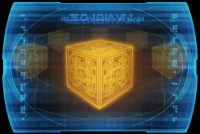
Clan Cadera
Location: (Organization)
Once a prominent faction among the Mandalorians, Clan Cadera has all but faded from recent memory. Most only associate them with their role in the Crusader’s schism, which began when Jicoln Cadera spoke out against the Mandalorians’ alliance with the Sith Empire.
The clan was nearly decimated after Artus Lok, who soon after became Mandalore the Vindicated, crushed Cadera’s rebellion. Those who survived were allowed to return to Mandalorian society, only to be looked upon with suspicion and doubt by many in the other clans.
Only Torian Cadera, Jicoln’s son, managed to rise above the scrutiny of his peers by becoming chief of Clan Cadera and a close adviser to Mandalore the Avenger. No other member of Clan Cadera’s last remnants has achieved any comparable degree of notoriety. Most are content to keep their heads down and fall in line.

Jicoln Cadera (Bounty Hunter)
Once an honored leader of a respected clan, the man known as Jicoln Cadera is now nothing but a specter–the lingering memory of a dark time for the Mandalorians.
When the warrior Artus claimed the title of Mandalore and called the clans to fight alongside the Empire, Jicoln refused. He would not serve the enemy his ancestors had spent generations waiting for–the Empire that he was born to oppose–and his defiance incited others to rally to his side. The gauntlet had been thrown, and only bloodshed would determine the future of the clans.
History ultimately favored Artus, his victory over Jicoln’s rebels legitimizing his bid to rule and earning him the title Mandalore the Vindicated. But Artus and Jicoln share a history beyond these campfire stories–one only the two of them know.

Torian Cadera (Bounty Hunter)
It is the Mandalorian ideal that a warrior be judged by his or her own actions, not by those of his or her ancestors–but reality rarely lives up to ideals.
Torian Cadera has spent his entire short life trying to overcome the stigma of being a traitor’s son–a shame he has seldom been allowed to forget in the company of his peers. But Torian long ago learned to armor himself against contempt, and others’ doubts regarding his loyalty have only driven him to strive harder to prove his worth.
Because of this, Torian adheres to the codes and traditions of the Mandalorians with more devotion than many twice his age. Upholding honor and enduring adversity are the cornerstones of his existence.

Akaavi Spar (Smuggler)
Akaavi Spar was born into a respected Mandalorian clan and became one of its finest warriors. She killed her first foe–an abusive Abyssin mercenary–at the age of eight using an improvised flamethrower. This victory earned her the nickname “firehand” among her clan and marked the beginning of an impressive career as an Imperial bounty hunter. Akaavi captured and killed all manner of targets in her youth, from career criminals to Jedi.
When her entire clan was framed for crimes against the Empire and executed, Akaavi alone survived the brutal purge–but her outlook on the galaxy changed forever. With no connection to her Mandalorian heritage, she became a wandering mercenary loyal to no one.

Clan Varad
Location: (Organization)
Considered aggressive even by Mandalorian standards, Clan Varad has carved out a reputation for violence over decades, raiding and plundering from various hidden bases throughout the Tamarin Sector. Its chieftain, Mavrix Varad, is known to be particularly bloodthirsty; Varad warriors who cannot pass his demanding combat trials are used for sparring and hunting practice by the younger members of the clan. Though life in Clan Varad is unremittingly harsh, those who survive quickly become accustomed to a steady flow of plunder, credits and weapons.
In recent times, the personality clashes between Mandalore and Mavrix Varad have grown impossible to ignore. Varad clansmen are no longer welcome on the Mandalorian stronghold of Geonosis, and Mandalore himself has privately described Mavrix Varad as “a rancor foaming at the mouth.” Clan Varad’s break with the Mandalorian leadership has surprised no one; its willingness to pick a fight with both the Empire and the Republic, however, suggests that even Mandalore may have underestimated the threat Mavrix Varad poses.

The Ash’ad
Location: (Organization)
“I convinced Luth to come with me. I showed him we could no longer follow Vizla. We are warriors, we should be taking our fight to Zakuul, not the worthless machines on Darvannis. Vizla may be Mandalore, but Zakuul left no other challengers. Maybe this is her way of thanking them.
I know there are others who feel the same, who will come with me too. There is a king who will let us hunt on his world. It is swarming with beasts the mightiest of us could only imagine. We can finally meet worthy prey again. The fool king wants tribute from our quarry, to slay offworld creatures and bring them to him from time to time. In return, he will leave us to hunt in peace. The di’kut doesn’t understand that acquiring his “payment” will bring us the honor we crave.
When we leave, Vizla will say we are not Mando’ade, and those sheb’urcyin who have forgotten what that word means will agree with her. But if what she has made us is “Mando’ade,” then I want no part of it. I will be ash’ad. I will be someone else.”
–From the journal of Mirli Lok, leader of the Ash’ad

Tarro Blood (Bounty Hunter)
The son of Alderaanian nobility, Tarro Blood renounced his privileged existence as the heir to a minor lordship in favor of pursuing greater glory and fame as a galaxy-renowned Mandalorian mercenary.
Leaving his past behind and taking on a new dramatic moniker, Blood was able to prove that he was no pretender after years of training under a famed Mandalorian champion. Under the guidance of this exceptional tutor, Blood became a feared warrior and the favorite to claim victory in the next Great Hunt.
Unfortunately, Tarro Blood’s characteristic arrogance and sudden rise to prominence rubbed his competition the wrong way. The other Mandalorians in the competition made it their mission to ensure that he never came close to claiming victory. The resulting defeat nearly cost Blood his life, in addition to his pride, and he has remained away from the public eye for nearly a decade.

Hedarr Soongh (Bounty Hunter)
Mandalorians tend to be renowned for their physical strength and stature. Legendary Mandalorians especially so–one could fill a dozen books with stories of warriors who wrestled beasts to the ground with their bare hands.
There is only one story, however, of a spry young boy fresh from his verd’goten who stood against grizzled veterans in the Great Hunt. His name was Hedarr Soongh, and history knew him as Soongh the Cunning after he proved that size and fortitude were not the only measure of a Grand Champion.



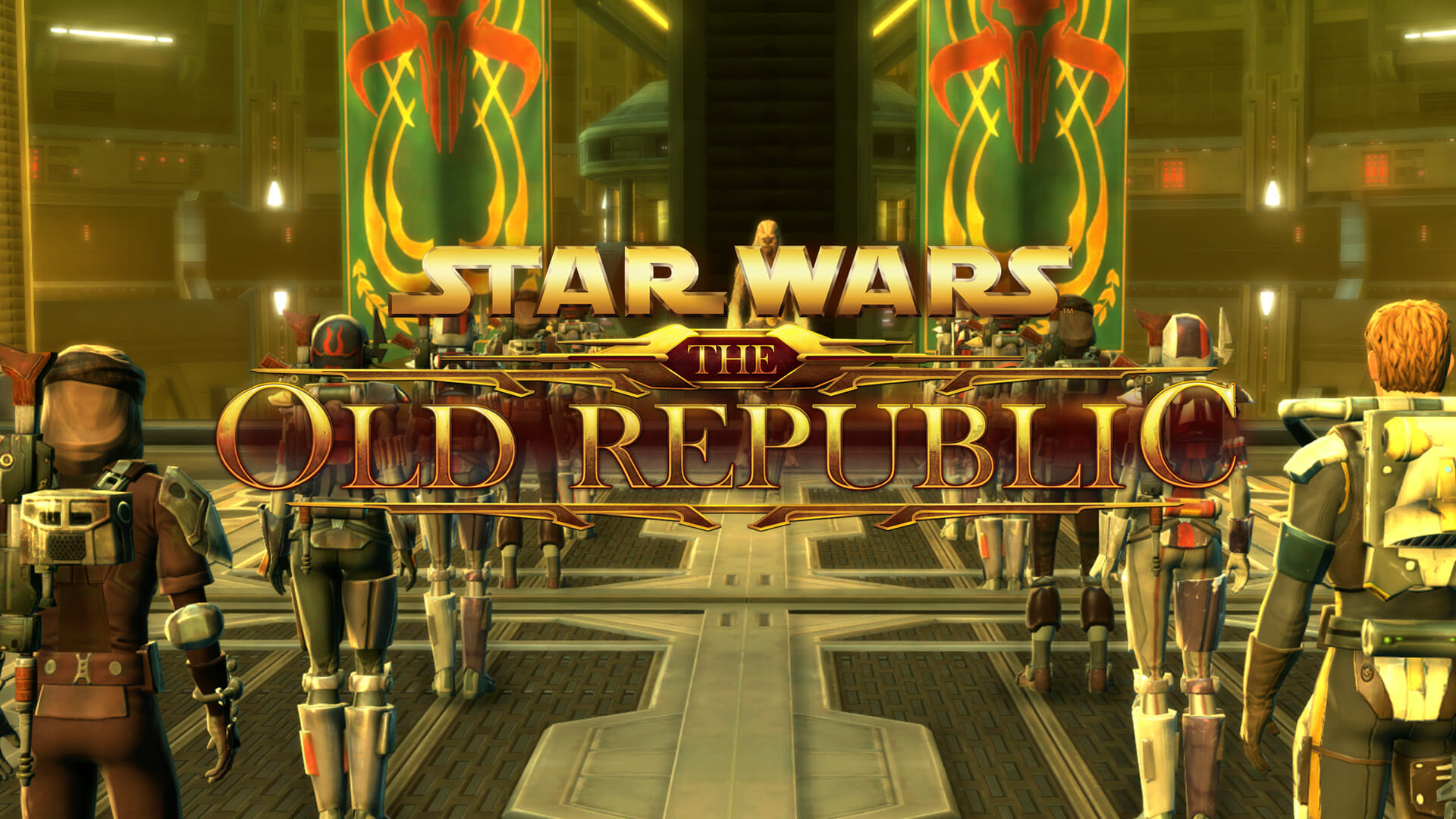
 Questions or comments? Feel free to send me a message on Twitter
Questions or comments? Feel free to send me a message on Twitter  Species of the Old Republic Lore Entries
Species of the Old Republic Lore Entries Tython, Coruscant and Jedi Old Republic Lore Entries
Tython, Coruscant and Jedi Old Republic Lore Entries Technology and Ships Old Republic Lore Entries
Technology and Ships Old Republic Lore Entries Expansion Planets Old Republic Lore Entries
Expansion Planets Old Republic Lore Entries Additional Planets Old Republic Lore Entries
Additional Planets Old Republic Lore Entries Zakuul, Iokath, Nathema and The Old Gods Old Republic Lore Entries
Zakuul, Iokath, Nathema and The Old Gods Old Republic Lore Entries Rakghouls and Taris Old Republic Lore Entries
Rakghouls and Taris Old Republic Lore Entries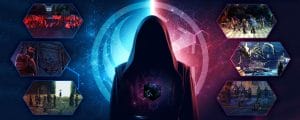

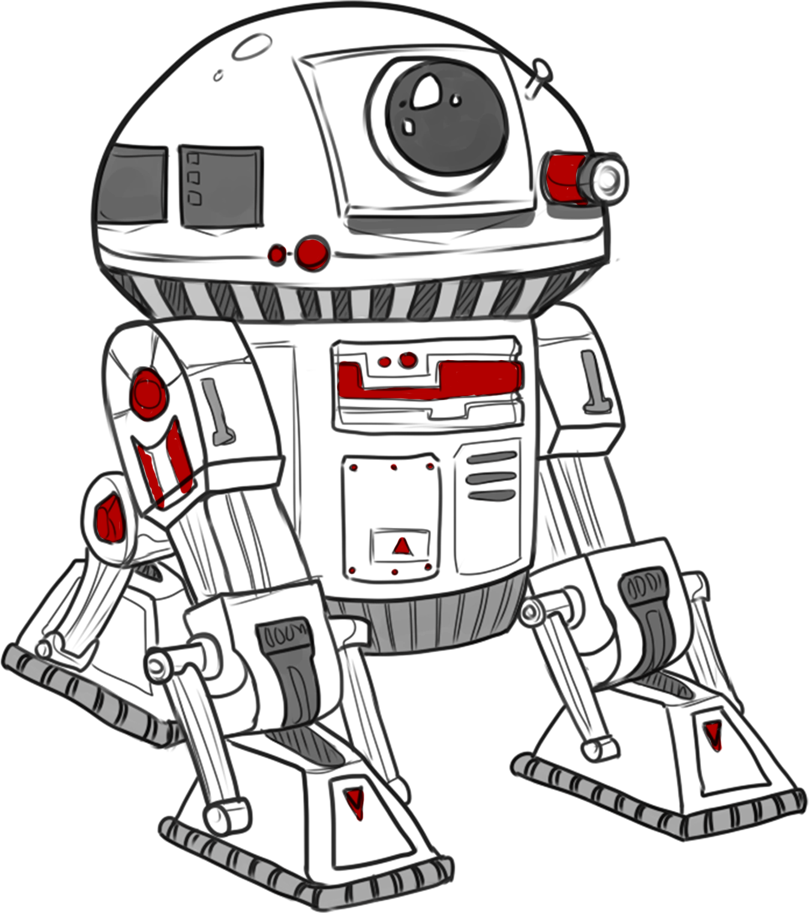
 Twitter @swtorista
Twitter @swtorista Reddit /u/swtorista
Reddit /u/swtorista Discord Swtorista#0153
Discord Swtorista#0153 Email swtorista@gmail.com
Email swtorista@gmail.com Youtube Swtorista
Youtube Swtorista Twitch Swtorista
Twitch Swtorista Patreon
Patreon